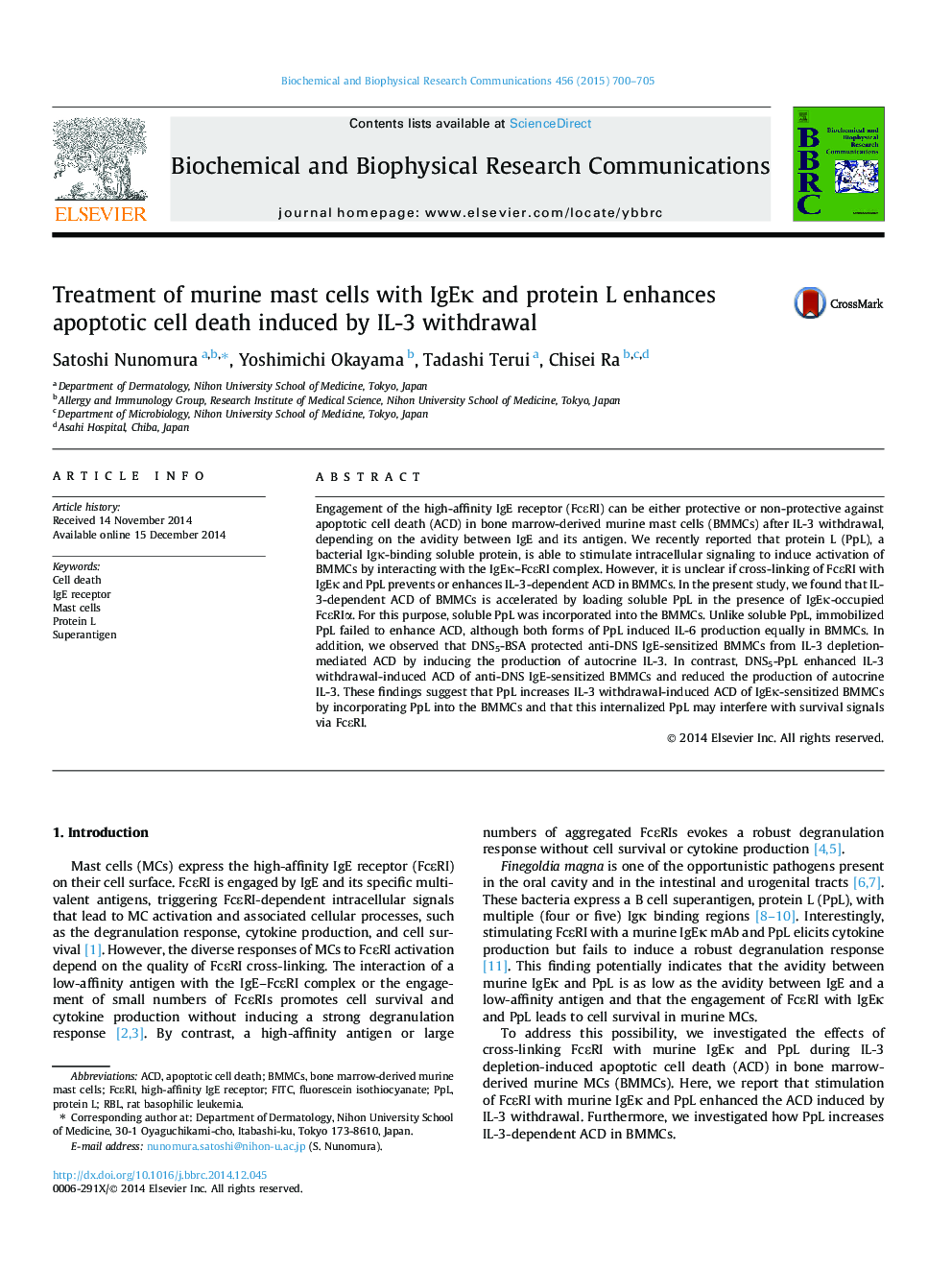| Article ID | Journal | Published Year | Pages | File Type |
|---|---|---|---|---|
| 1928299 | Biochemical and Biophysical Research Communications | 2015 | 6 Pages |
•Soluble PpL enhances IL-3-dependent apoptotic cell death in mast cells.•FcεRIα and IgEκ are required for the PpL-dependent augmentation of cell death.•Immobilization of PpL prevents cell death enhancement.
Engagement of the high-affinity IgE receptor (FcεRI) can be either protective or non-protective against apoptotic cell death (ACD) in bone marrow-derived murine mast cells (BMMCs) after IL-3 withdrawal, depending on the avidity between IgE and its antigen. We recently reported that protein L (PpL), a bacterial Igκ-binding soluble protein, is able to stimulate intracellular signaling to induce activation of BMMCs by interacting with the IgEκ–FcεRI complex. However, it is unclear if cross-linking of FcεRI with IgEκ and PpL prevents or enhances IL-3-dependent ACD in BMMCs. In the present study, we found that IL-3-dependent ACD of BMMCs is accelerated by loading soluble PpL in the presence of IgEκ-occupied FcεRIα. For this purpose, soluble PpL was incorporated into the BMMCs. Unlike soluble PpL, immobilized PpL failed to enhance ACD, although both forms of PpL induced IL-6 production equally in BMMCs. In addition, we observed that DNS5-BSA protected anti-DNS IgE-sensitized BMMCs from IL-3 depletion-mediated ACD by inducing the production of autocrine IL-3. In contrast, DNS5-PpL enhanced IL-3 withdrawal-induced ACD of anti-DNS IgE-sensitized BMMCs and reduced the production of autocrine IL-3. These findings suggest that PpL increases IL-3 withdrawal-induced ACD of IgEκ-sensitized BMMCs by incorporating PpL into the BMMCs and that this internalized PpL may interfere with survival signals via FcεRI.
